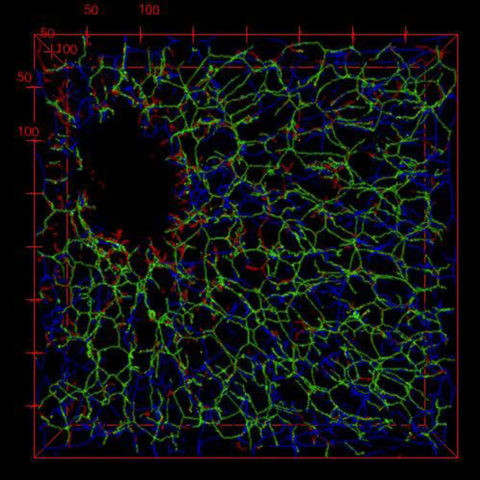LiSyM - Liver Systems Medicine
The model-assisted prediction of the progression of a liver disease and an individually optimized therapy recommendation by computer simulation would be huge clinical advances. The research network Liver Systems Medicine (LiSyM) is taking on this challenge. LiSyM is working closely with clinical partners to identify the key processes in liver disease and to derive personalized multiscale models. This interdisciplinary task is to be dealt with methods of system biology, a research area in which the ZIH has been active successfully for many years.
Specifically, the ZIH is involved in a LiSyM subproject in which we aim to model the essential signaling pathways involved in the formation of the non-alcoholic fatty liver. The three-dimensional spatial alterations resulting from the progressive accumulation of lipid droplets in liver cells are of particular importance. We use the special features offered by our software Morpheus (see publication list) for the modeling and simulation of multi-scale biological processes. As a first example, the image shows a simulated bile canaliculi network within the liver. For the simulation, we used a mechanistic model for the patterning of liver cells and the three-dimensional geometry of several hundred liver cells and blood vessels segmented from microscopy data. Different colors of the canaliculi represent simulated deviations and alterations.
Partners
- Max Planck Institute of Molecular Cell Biology and Genetics
- University Hospital Carl Gustav Carus
- Humboldt-Universität zu Berlin
- University Medicine Greifswald
- Bayer Technology Services Leverkusen
- Universitätsklinikum Schleswig-Holstein
- LiSyM Network
ZIH Contact
Dr. Lutz Brusch
Project Term
01/2016 - 12/2018
Funding
BMBF (Funding number 031L0033)
Publications
J. Starruß, W. de Back, L. Brusch, A. Deutsch. Morpheus: a user-friendly modeling environment for multiscale and multicellular systems biology. Bioinformatics 30, 1331-1332, 2014.

